Dear Zazie, Here is today’s Lovers’ Chronicle from Mac Tag dedicated to his muse. Rhett
The Lovers’ Chronicle
Dear Muse,
© copyright 2021 mac tag/cowboy coleridge all rights reserved
© copyright 2020 mac tag/cowboy coleridge all rights reserved
Pale Love, Pale Rider
ok, so it was not
that tough
doin’ nothin’ prevailed
i know, shockin’ right
the sideline suits just fine
watchin’ and writin’
as it all slip slides away
© copyright 2019 mac tag/cowboy coleridge all rights reserved
bent, for sure
“Broken?”
mebbe
time will tell
an awakenin’
perhaps
a “to be or not to be”
moment for sure
this is tough
it would be so easy
to do nothin’
to take the path
of least resistance
to stay on the sidelines
and watch and write
as time slips away
© copyright 2018 mac tag/cowboycoleridge all rights reserved
on streams holdin’ you suspended
at the entrance, prone spread open
another sufferin’ vain point of view,
feel you, helpless, you hug
delusions, these desires without measure
rampagin’ in your flanks as ardent swarms
such transport is already the future
it will dissolve, this touch
that launched feelin’s of joy and pain
the winds disperse this dust
which was once a heartbeat
your broken hopes, of your love extinguished,
perpetuatin’ your tears, your dreams, your flame,
in distant agesall feelin’s, form a chain
the torch of what could be
quick take the truth
and make it turn
 Today is the birthday of Simon Vouet (9 January 1590 – 30 June 1649); painter and draftsman, who today is perhaps best remembered for helping to introduce the Italian Baroque style of painting to France.
Today is the birthday of Simon Vouet (9 January 1590 – 30 June 1649); painter and draftsman, who today is perhaps best remembered for helping to introduce the Italian Baroque style of painting to France.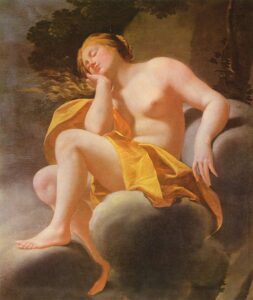
Vénus Endormie, Musée des beaux-arts de Budapest
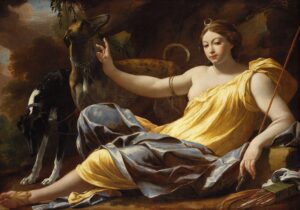
Diana
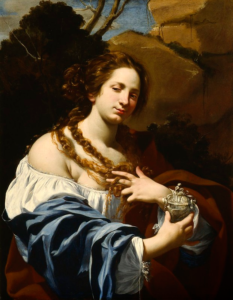
Virginia da Vezzo, the Artist’s Wife, as the Magdalen


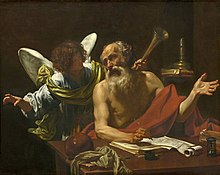
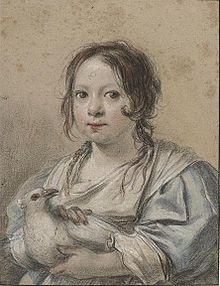
| Simone de Beauvoir | |
|---|---|
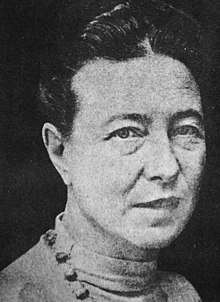
De Beauvoir in 1968
|
|
 |
|
Today is the birthday of Simone Lucie Ernestine Marie Bertrand de Beauvoir (Paris; 9 January 1908 – 14 April 1986 Paris); writer, intellectual, existentialist philosopher, political activist, feminist and social theorist. Though she did not consider herself a philosopher, she had a significant influence on both feminist existentialism and feminist theory.
De Beauvoir wrote novels, essays, biographies, autobiography and monographs on philosophy, politics and social issues. She was known for her 1949 treatise Le Deuxième Sexe (The Second Sex), a detailed analysis of women’s oppression and a foundational tract of contemporary feminism; and for her novels, including She Came to Stay and The Mandarins. She was also known for her lifelong open relationship with French philosopher Jean-Paul Sartre.
During October 1929, Jean-Paul Sartre and De Beauvoir became a couple and, after they were confronted by her father, Sartre asked her to marry him. De Beauvoir said, “Marriage was impossible. I had no dowry.” So they entered a lifelong relationship. De Beauvoir chose never to marry and did not set up a joint household with Sartre. She never had children. This gave her time to earn an advanced academic degree, to join political causes, to travel, to write, to teach and to have lovers (both male and female; the latter sometimes shared with Sartre).

Le Deuxième Sexe, 1949
On ne naît pas femme : on le devient.
-
Le Deuxième Sexe, Simone de Beauvoir, éd. Gallimard, 1950, t. II. L’expérience vécue, partie première: Formation, chap. premier: Enfance, p. 13
Le propre des manies et des vices, c’est d’engager la liberté à vouloir ce qu’elle ne veut pas.
-
Le Deuxième Sexe (1949), Simone de Beauvoir, éd. Gallimard, coll. « Folio », 1976, t. II. L’expérience vécue, p. 266
La femme est vouée à l’immoralité parce que la morale consiste pour elle à incarner une inhumaine entité : la femme forte, la mère admirable, l’honnête femme etc.
-
Le Deuxième Sexe (1949), Simone de Beauvoir, éd. Gallimard, coll. « Folio », 1976, t. II. L’expérience vécue, p. 310
C’est la femme qui travaille – paysanne, chimiste ou écrivain – qui a la grossesse la plus facile du fait qu’elle ne se fascine pas sur sa propre personne ; c’est la femme qui a la vie personnelle la plus riche qui donnera le plus à l’enfant et qui lui demandera le moins, c’est celle qui acquiert dans l’effort, dans la lutte, la connaissance des vraies valeurs humaines qui sera la meilleure éducatrice.
-
Le Deuxième Sexe (1949), Simone de Beauvoir, éd. Gallimard, coll. « Folio », 1976, t. II. L’expérience vécue, p. 384
Si l’on dit que les hommes oppriment les femmes, le mari s’indigne, mais le fait est que c’est le code masculin, c’est la société élaborée par les mâles et dans leur intérêt qui a défini la condition féminine sous une forme qui est à présent pour les deux sexes une source de tourments.
-
Le Deuxième Sexe (1949), Simone de Beauvoir, éd. Gallimard, coll. « Folio », 1976, t. II. L’expérience vécue, p. 237
Mac Tag


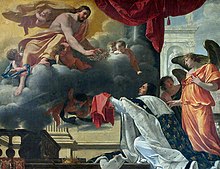
No Comments on "The Lovers’ Chronicle 9 January – awakenin’ – art by Simon Vouet – birth of Simone de Beauvoir"